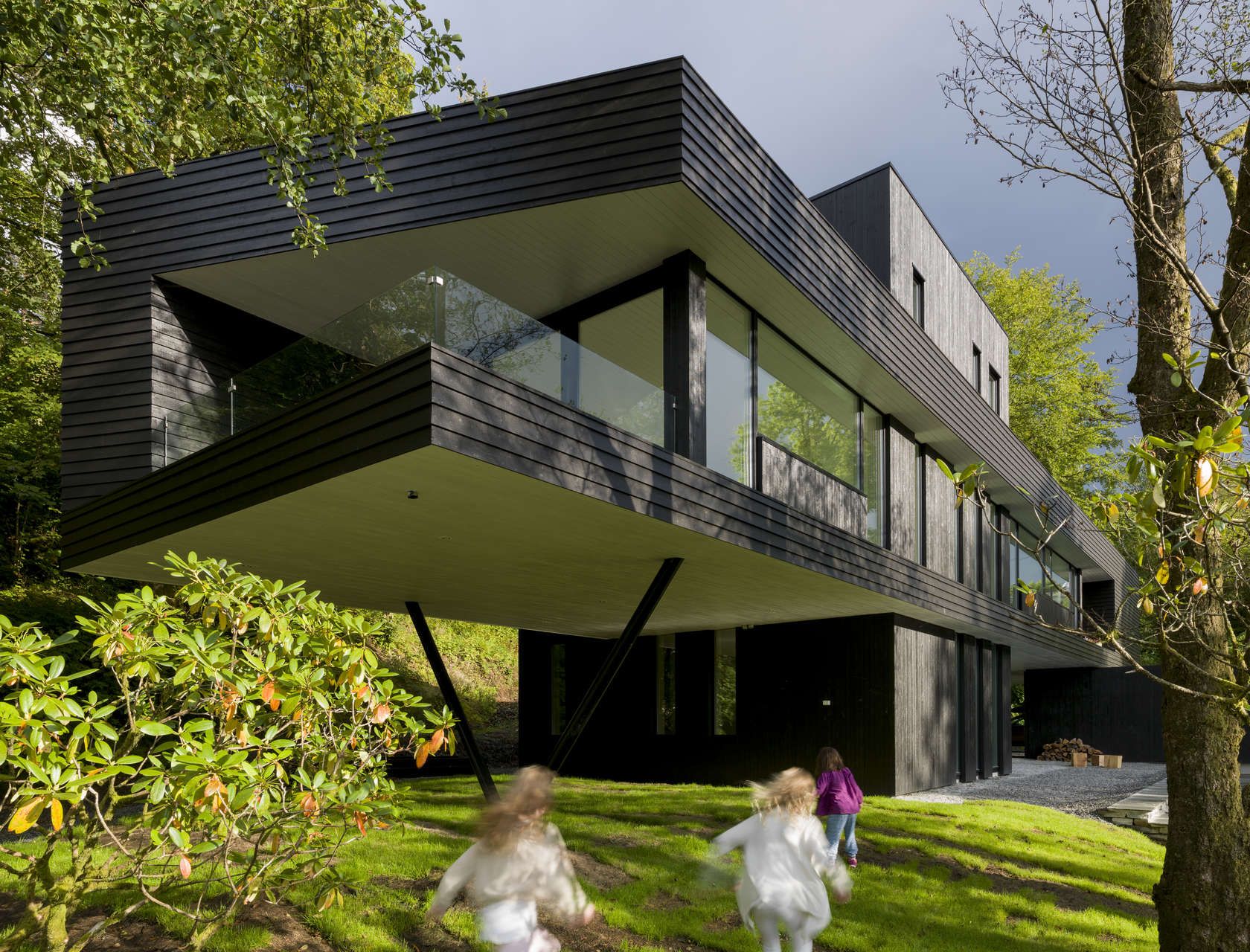#11521. Cantilevered House with Dark Timber Facade in Forest Setting

This modern private residence exemplifies minimalist architecture harmoniously integrated into its natural surroundings. The facade features dark-toned horizontal timber cladding that creates a strict, rhythmic pattern. Particular attention is drawn to the cantilevered second-floor element that visually floats above the ground, supported by diagonal structural supports.
The architect masterfully employed contrast between the dark facade cladding and the light surfaces of the underside of the projecting volume, giving the structure visual lightness. Floor-to-ceiling glazing occupies a significant portion of the facade, providing not only abundant natural light to the interior spaces but also creating a dialogue between the interior and the surrounding forest landscape.
The home's design reflects the influence of classic modernist principles — clean geometric shapes, functionality, and structural openness. The dark wooden cladding lends the building an organic quality and helps it integrate naturally with the forest environment. The facade is devoid of decorative elements; its expressiveness is achieved through the interplay of volumes, materials, and textures.
For application in your own facade design, several techniques can be highlighted: using horizontal cladding to visually expand the space, playing with contrasts between dark and light surfaces, creating dynamism through projecting architectural elements, and integrating large glazed areas for visual connection with the surrounding environment. It's also worth noting the minimalist approach to details, where each element has a functional justification.